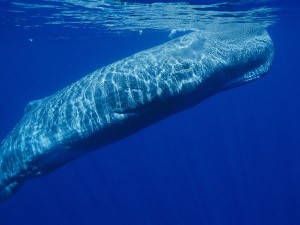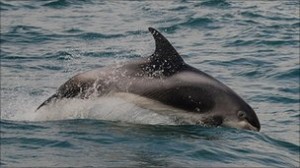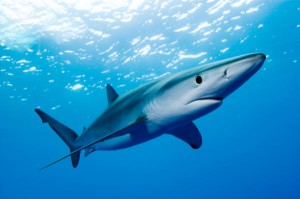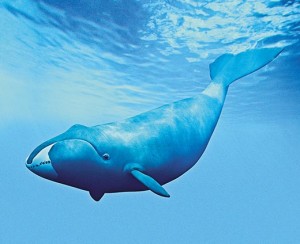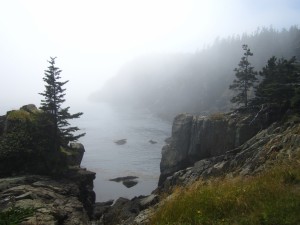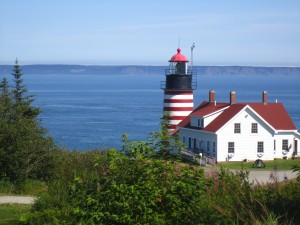We started the morning bright and early. Finally we were going out after being in for more than a week! We were all set and ready to go when…the engine wouldn’t start. Surely this was just a fluke, we haven’t had any problems this field season! So we tried again…nothing. Just the disheartening sound of an engine desperately trying to turn over and failing miserably. Fortunately the Callisto was going out today as well and were still on the dock as we were attempting to disembark. Two boats tied together and one set of jumper cables later, we had the engine started. Great! We waved to the Callisto as they departed, still yelling our thanks…
…and then the engine cut. Sarah ran to the house to grab the battery jumper we had brought with us, but we were not very confident in how well it was charged. When we tried it though, it worked. And we were off!
We were soon out into the Bay and on our track lines, surveying for any signs of right whales. We stopped for a listening station (without turning off the engine, just to be safe!) but heard nothing. So we continued on until we got that same old call that trusty #3390 and her calf were nearby. We sped off in that direction full speed and eventually came upon a fluking whale not too far off our bow. Great! Got them! We pulled back a little…
…and then the engine cut. Awesome. Grace turned the key to start it back up, and we got no response. Super. We pulled out the battery jumper, and it was dead. Fantastic. It was official. We were dead in the water!
Now when you think about it, being dead in the water is a pretty scary thing. When you lose the ability to move, you also lose the ability to get away from situations that are unsafe or uncomfortable. Luckily for us (and I use the term luckily rather loosely here) the sea state was only a 2 or so and the swells weren’t too large. Otherwise we could have been tossed around like a toy boat in a bubble bath. With waves. Also luckily for us, we had plenty of friends nearby. We quickly called the Nereid to relay our position just in case our electronic batteries died too. Soon after, we got calls from the Callisto, Jupiter, and the Eukita ready to help however they could! Luckily again, we had kept the jumper cables on the boat. One of our better decisions that day, to be sure! The Callisto was the winner, being faster than the Nereid and closer than the other two boats.
And so we waited. At least we had some company.
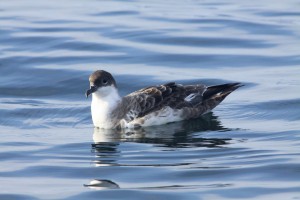
Finally our help arrived. We tied up alongside the Callisto for the second time that morning and they managed to give us another jump. It was definitely time to get home and we were eager to do so before our engine shut down again. So we set off at full speed to the dock with the Callisto not far behind to help us when we got there, which we certainly would need. Docking is definitely something we wouldn’t be able to do if we were dead in the water again! The engine only cut two more times on the way back (only…) but we were able to get it started up again without any problems. We tied up to the Callisto at the dock one last time and they guided us in gently. We were back! And without any real damage to anyone or anything, except of course the Selkie…
As of yet, we don’t know quite what is wrong. Probably a bad battery, but maybe a combination of other factors as well. Here’s hoping that our last week in the Bay won’t be spent tied up at the dock. More soon…and hopefully good news! If nothing else today was definitely an adventure, and a lesson in the value of always being prepared!
